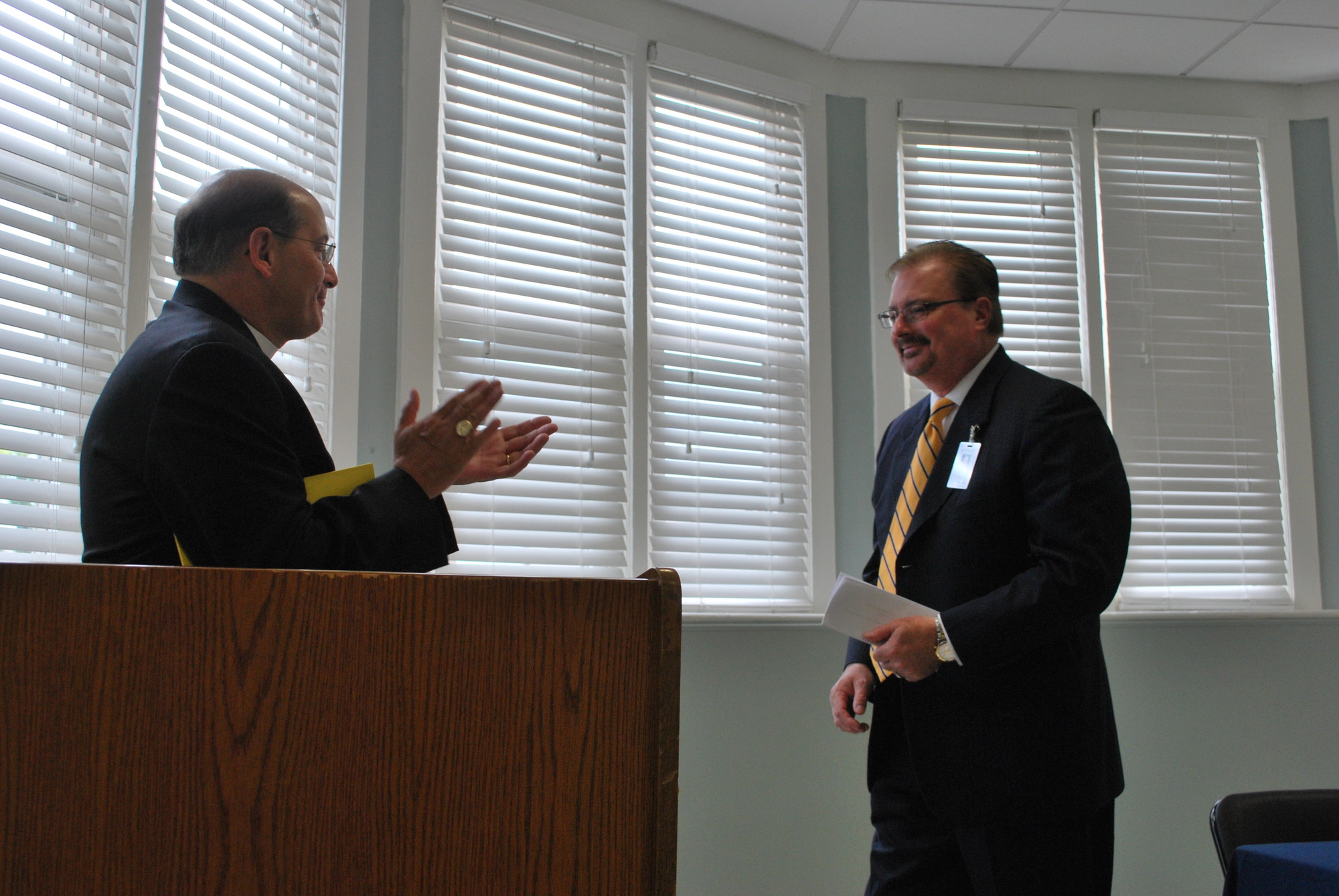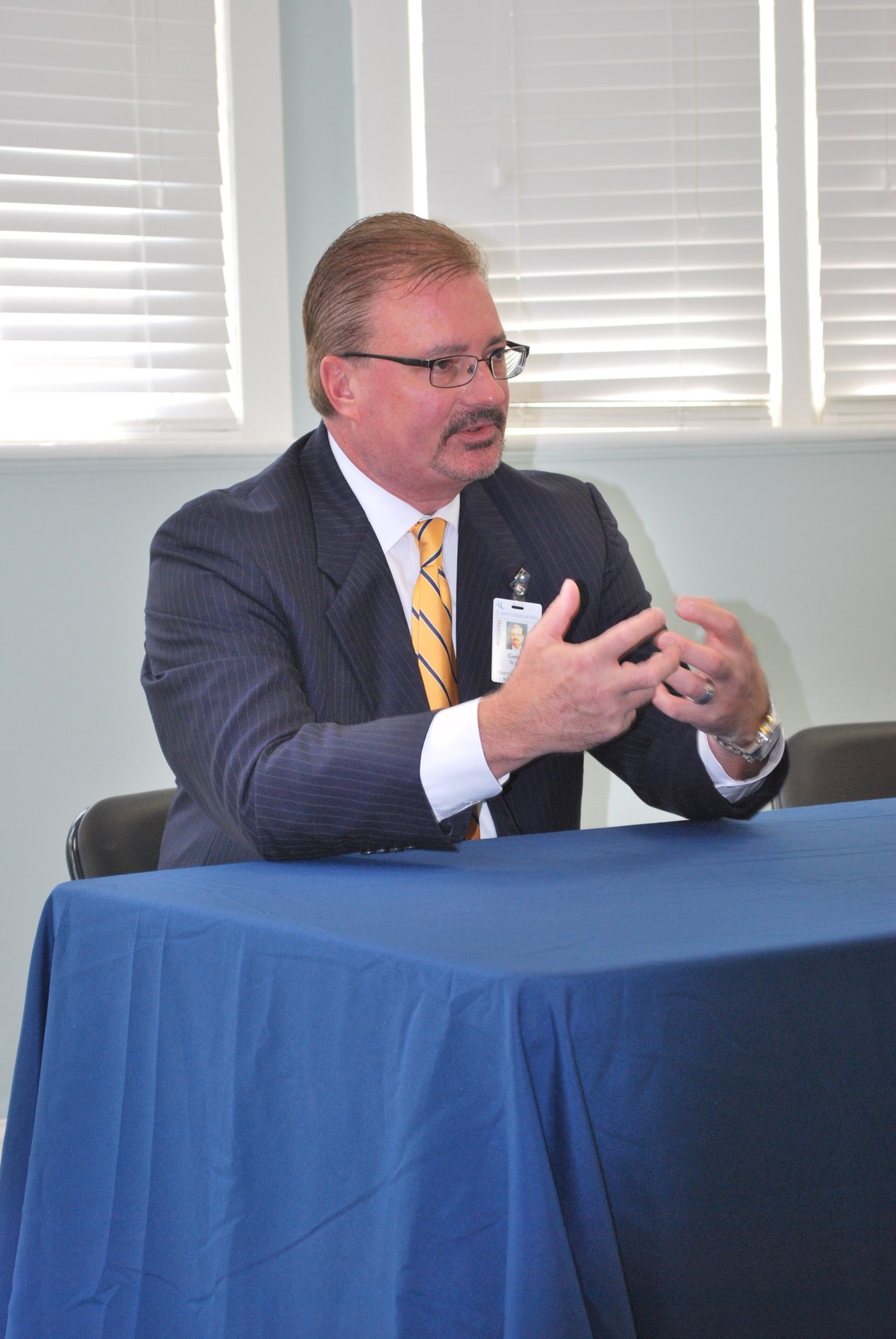St. John’s names new chief executive officer
Queens native to rethink hospital’s strategic plans
Gerard “Jerry” Walsh was part of the class that earned the first health care administration degrees from St. John’s University in 1979, and the Queens native — who spent his formative years in Elmhurst and began working in Forest Hills — has returned after 17 years in Maryland to be the new chief executive officer of St. John’s Episcopal Hospital in Far Rockaway.
Walsh, 59, replaces Richard L. Brown, who had succeeded Nelson Toebbe in August 2013. Both Brown and Toebbe worked for the Louisiana-based Pitts Management, which ran the 110-year-old, 240-bed hospital for Episcopal Health Services, which owns it. When Pitts’s contract expired last year, it was extended for several months prior to Walsh’s hiring, Bishop Lawrence Provenzano, the leader of the Episcopal Diocese of Long Island, explained. The diocese oversees Episcopal Health Services. Provenzano said that Episcopal Health Services hired a search firm that conducted a national search for a CEO.
Officially announced as the new chief executive on Monday, Walsh was hired by Episcopal Health Services and the hospital’s board. The hospital has been the only one on the Rockaway Peninsula since Peninsula Hospital closed in 2012. St. John’s also includes the Five Towns and other surrounding communities in its coverage area.
“My first priority is to create a new strategic plan for St. John’s, as the old strategic plan is over,” Walsh told hospital administrators, board members and reporters at a press conference on Monday. “We will build with input from the folks who live in the community.”
St. John’s has navigated turbulent waters in the past few years, and rising costs and revenue losses forced the hospital to close its chemical dependency unit two years ago. The unit was losing $1.4 million per year, according to St. John’s officials. Last year, the hospital sold the Bishop Henry B. Hucles Nursing Home in Brooklyn to Providence Care Inc. for $29.5 million, and also Bishop Waldo McLean Nursing Home, now known as Beach Gardens, to Michael Melnicke and Leo Friedman, who managed the facility for two years prior to the sale. EHS realized $1.8 million from that transaction, and other financial considerations are tied to reimbursements for hospital services, officials said.
On Monday, Provenzano forcefully repeated what he had said at a public forum in March 2014. “St. John’s will survive,” he said. “We are not going away, and it is not going out of business.”
The bishop called on local state legislators to help the hospital obtain $9.2 million to complete what is projected to be a $10 million expansion of its emergency room. The first of three phases of work was expected to be completed last December, Brown said in 2013, but construction has stalled due to a lack of funding.
Plans called for doubling the size of the emergency area from its current 12,500 square feet to 23,000. The emergency department was originally designed to treat 15,000 patients per year, but it is now serving more than 40,000. The expanded department will have 19 main private treatment rooms, 21 internal disposition areas, six fast-track cubicles and 14 psychiatric treatment areas.
Walsh said he would meet with senior hospital officials on Thursday to begin sketching out a preliminary framework for a new three-year strategic plan. He previously served as vice president of LaGuardia Hospital and chief operating officer of North Shore University Hospital, both in Forest Hills; and vice president of operations for Dorchester General Hospital/Shore Health System, senior vice president and COO of Shore Regional Health, and CEO of the Meritus Health System, all in Maryland.
Lawrence resident Margaret Carpenter, who has served on the St. John’s board of directors for more than 25 years, said she anticipates better communication and an improved working relationship with the new CEO. “This is a wonderful result that he will work directly with us, the board — it will be a partnership,” she said. “The relationship with the management company was more complicated, as they had their way of doing things.”

 50.0°,
Overcast
50.0°,
Overcast 







